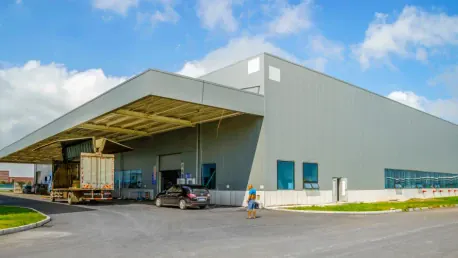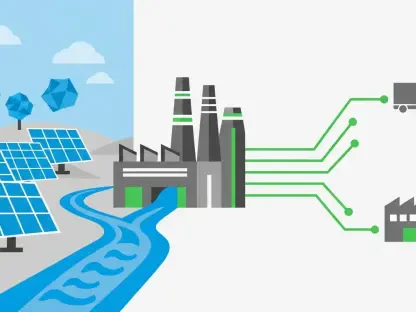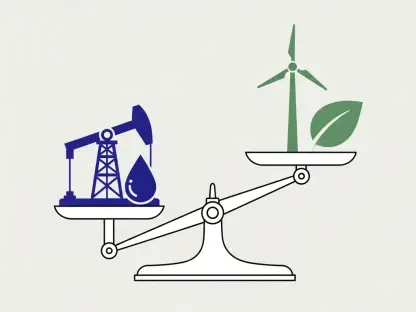In Staten Island, a controversy is brewing over the development of a new battery energy storage site by NineDot Energy. Local resident Valerie Vislocky of Manor Heights received a care package from NineDot Energy containing water bottles, a towel, and a handwritten note. This note detailed the company’s plans to build a battery energy storage site at 15-21 Tillman Street and expressed NineDot Energy’s commitment to sustainable energy. The company claimed that the new facility would support a more resilient grid in the local community. However, these plans have sparked significant concerns among Staten Island residents.
Community Concerns and Initial Reactions
Valerie Vislocky’s Research and Alarm
Upon learning about the planned development, Vislocky decided to dig deeper into Battery Energy Storage Systems (BESS), particularly focusing on lithium-ion facilities to understand their potential risks and benefits. Her research quickly alarmed her as she came across multiple reports detailing fires, toxic emissions, and other hazards associated with these systems. Vislocky’s primary concern stemmed from the safety of her two young children who play near the designated construction site. Upon sharing her concerns with neighbors, she discovered that many shared the same apprehensions. Spurred by this collective anxiety, Vislocky initiated a campaign against the development, starting with a petition on Change.org. Within three days of launching, the petition, which called for an immediate halt to construction, garnered nearly 400 signatures. The swift spike in support underscored the significant unease within the community regarding the BESS facility.
Petitioners’ Arguments and Community Sentiment
The primary argument presented by the petitioners emphasized the proximity of the BESS facility to residential homes and the perceived dangers it poses. They also highlighted the lack of prior notification to the community, which contributed to their frustration. The site in question, located at the corner of Manor Road and Tillman Street, has been a quiet, vacant parking lot for years, occasionally frequented by a few cars but largely non-disruptive. The transition from a vacant lot to an energy storage site represents a considerable change for the neighborhood, which understandably raises concerns among residents about potential risks to their safety and quality of life.
Residents argue that placing a potentially hazardous facility so close to homes is reckless, especially when they had not been adequately consulted about the decision. This shift could drastically impact the daily lives of those living nearby, causing distress and worry about the implications for their health and safety. Many residents feel that their voices have not been heard, and continue to express their dissatisfaction and concern over the proposed development.
NineDot Energy’s Perspective and Project Details
Environmental Benefits and Project Timeline
NineDot Energy is quick to highlight the environmental benefits that their projects aim to provide. For instance, they began constructing the 5.5 megawatt BESS facility with an expected operational start by the end of 2025. The company, along with other green energy advocates, argues that such facilities are essential for meeting New York City’s environmental goals. They assert that BESS installations help alleviate pressure on the city’s electrical grid by storing and redistributing electrical energy from various sources as needed. Despite these benefits, there exists widespread unease among residents and local officials in Staten Island. This sentiment largely stems from concerns about the safety of BESS facilities located in residential areas. NineDot and other proponents of BESS facilities argue that these installations are necessary to support the city’s transition to renewable energy sources and ensure grid resilience. However, the perceived lack of safety assurances and transparency in the planning process has left residents skeptical.
Previous Community Board Decisions and Moratoriums
Community Boards on Staten Island have not been silent on the issue of BESS facilities. Previously, these boards voted against the siting of BESS facilities near commercial establishments such as bakeries and storefronts. Furthering this resistance, elected officials have also imposed a moratorium on BESS applications within residential zones. These decisions illustrate a broader reluctance to accept the implementation of such projects without first ensuring comprehensive safety protocols are in place.
Notably, a previous energy developer retracted plans to place batteries in a church parking lot in Bulls Head due to substantial community pressure. These instances reflect the broader apprehension among borough residents regarding the safety and placement of BESS facilities. Such decisions underscore the need for developers to engage more effectively with communities and consider their concerns upfront to gain broader acceptance for their projects.
Safety Concerns and Historical Incidents
Incidents Fueling Skepticism
One of the primary factors fueling the skepticism around BESS facilities are the documented incidents of battery energy storage system failures. A notable example is an incident in Moss Landing, California, where a battery energy storage system caught fire, resulting in a prolonged hazardous situation. Such incidents raise genuine concerns about the safety of these facilities, especially when placed in close proximity to residential areas.
Reacting to these incidents, Staten Island Borough President Vito Fossella has been vocal about the need for a moratorium on BESS construction in New York City until all safety protocols are definitively met. Pointing out recurrent issues of fires and toxic emissions associated with BESS facilities, Fossella has questioned the prudence of situating such facilities near residential homes. His stance reflects a growing call for stringent safety measures and thorough evaluations before proceeding with the development of any new BESS sites.
NineDot Energy’s Safety Measures and Reassurances
In response to the backlash from the community and local officials, NineDot Energy has been emphasizing the rigorous safety measures observed in their projects. The company clarified that the New York Fire Department (FDNY) had thoroughly examined the site and concluded that there were no safety issues. NineDot also reassured the public that the battery installations adhere to both city and international fire code regulations, which mandate a 10-foot distance between any battery and a building.
Moreover, NineDot highlighted that the specific BESS technology used in their project, the Tesla Megapacks, had been tested by the FDNY and considered safe for use in New York City due to layers of safety redundancy designed to prevent “thermal runaway.” Thermal runaway refers to a chain reaction where a fire spreads from one cell or module to another, leading to a potentially catastrophic situation. These assurances are meant to mitigate resident concerns and underline the company’s commitment to safe and effective energy solutions.
Community Engagement and Future Steps
Addressing Technology and Safety Comparisons
To further address community concerns, NineDot Energy has made efforts to distinguish between the BESS technology they employ and other battery technologies, such as e-mobility devices, which had been subject to FDNY warnings due to their unregulated status until recently. NineDot referenced a 2023 BESS fire in Warwick, New York, which led to no injuries and was found to result in no hazardous materials contamination by the Governor’s Inter-Agency Fire Safety Working Group. Importantly, the fire involved a different battery technology that was not approved by the FDNY for use in New York City.
Despite the reassurances provided by NineDot Energy, the unease among residents persists. The Change.org petition echoes the community’s sentiment that safety should be prioritized over convenience or profit. Residents like Vislocky acknowledge the importance of renewable energy and grid resilience, but they contest the current siting decisions made without adequate community consultation or consideration of alternative, less intrusive locations for such facilities.
Continuing the Community Dialogue
In Staten Island, a controversy has emerged surrounding the construction of a new battery energy storage facility by NineDot Energy. Valerie Vislocky, a resident of Manor Heights, received a care package from NineDot Energy that included water bottles, a towel, and a handwritten note. This note outlined the company’s intention to develop a battery energy storage site at 15-21 Tillman Street and emphasized NineDot Energy’s dedication to sustainable energy solutions. The company asserted that the new site would contribute to a stronger and more reliable power grid for the local area. Despite the company’s claims, the proposal has generated substantial opposition and concern among Staten Island residents. Many locals are worried about potential environmental impacts, safety issues, and the overall effect on the community. These concerns reflect apprehension about embracing new technologies without fully understanding their long-term implications. The heated debate continues as both sides present arguments about the benefits and risks of such an energy project in their neighborhood.









